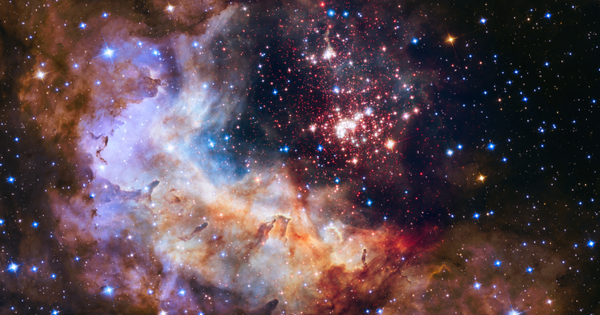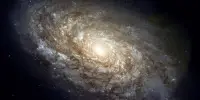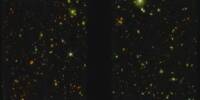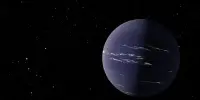Using images of Centaurus A, a neighboring elliptical galaxy, taken with the Gaia space telescope and ground-based equipment as part of the PISCeS survey, a team of astronomers reveals an extraordinary number of globular cluster candidates in the galaxy’s outer regions. The discoveries give astronomers with a more precise picture of galaxy architecture and the history of collisions and mergers.
A survey done using a combination of ground and space-based observatories uncovered a treasure trove of previously unknown globular clusters — ancient, dense groups of thousands of stars that all formed at the same time — in the outer parts of the elliptical galaxy Centaurus A. The work presents a significant advance in understanding the architecture and cosmological history of this galaxy and offers new insights into galaxy formation in general and the distribution of dark matter in the universe.
Allison Hughes, a doctoral student in the University of Arizona Department of Astronomy and Steward Observatory, is the first author of a peer-reviewed paper summarizing the findings that was published in the Astrophysical Journal in June. She will present the study during a virtual press briefing at the 239th Meeting of the Astronomical Society of America.
Centaurus A, commonly known as NGC 5128, is a visually magnificent elliptical galaxy with a relativistic jet spewing from a supermassive black hole at its center and spectacular streams of scattered stars left behind by prior collisions and mergers with smaller galaxies surrounding Centaurus A. Centaurus A, located 13 million light-years from Earth, is too far away for astronomers to identify individual stars, yet star clusters can be identified as such and utilized as “fossil evidence” of the galaxy’s turbulent growth.
We’re using the Gaia satellite, which mostly focuses on surveys within our own galaxy, the Milky Way, in a new way in that we link up its observations with telescopes on the ground, in this case the Magellan Clay telescope in Chile and the Anglo-Australian Telescope in Australia.
Allison Hughes
Hughes and colleagues present a new catalog of roughly 40,000 Centaurus A globular cluster candidates, advising follow-up observations focusing on a subset of 1,900 that are most likely to be real globular clusters. The researchers studied globular cluster candidates out to a projected radius of around 150 kiloparsecs, or roughly 500,000 light-years from the galaxy’s center. The data comprises observations from the Panoramic Imaging Survey of Centaurus and Sculptor, or PISCeS; Gaia, a European Satellite Agency space observatory; and the NOAO Source Catalog, which collects publically available photos from telescopes in both hemispheres covering nearly the whole sky.
Centaurus A has been a leading target for extragalactic globular cluster studies due to its richness and proximity to Earth, but the majority of studies have focused on the galaxy’s inner 40 kiloparsecs (about 130,500 light-years), leaving the galaxy’s outer reaches largely unexplored, according to Hughes. The researchers determined that about 1,900 candidates are highly likely to be confirmed as real globular clusters and should be given the highest priority for follow-up spectroscopic confirmation.
“We’re using the Gaia satellite, which mostly focuses on surveys within our own galaxy, the Milky Way, in a new way in that we link up its observations with telescopes on the ground, in this case the Magellan Clay telescope in Chile and the Anglo-Australian Telescope in Australia.”
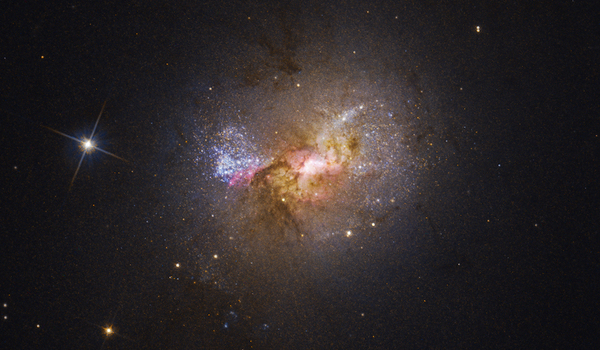
Centaurus A’s structure tells scientists that it went through numerous big mergers with other galaxies, resulting in its glob-like appearance with river-like parts that have considerably more stars than the surrounding areas, according to Hughes. Centaurus A, the closest example of an elliptical galaxy, allows scientists to examine a galaxy that is substantially different from our own. The Milky Way and its nearest neighbor, the Andromeda Galaxy, are both spiral galaxies. Spiral galaxies may appear to be the “typical” galaxy due to their recognizable, pinwheel-like form, yet their less ordered elliptical cousins outweigh them in the universe.
“Centaurus A may appear to be a strange outlier, but that’s only because we can get near enough to examine its nitty gritty characteristics,” Hughes explained. “More likely than not, both elliptical and spiral galaxies like the Milky Way are messier than we realize when we look a little deeper than just on the surface.”
Hughes explained that globular clusters are evidence of processes that occurred a long time ago. “For example, if you see a line of these globular clusters that all have comparable metallicity (chemical makeup) and move with similar radial velocity, we know they must have come from the same dwarf galaxy or another similar object that crashed with Centaurus A and is now being assimilated.”
Star clusters emerge from concentrated regions of gas in the interstellar medium. Almost every galaxy has globular clusters, including the Milky Way, which has roughly 150 of them, but most stars are not grouped in such groupings. According to Hughes, observing globular clusters can provide scientists with information about the galaxy that hosts them, such as its mass, history of interactions with surrounding galaxies, and even the distribution of dark matter within.
“Globular clusters are interesting because they can be utilized as tracers of structures and processes in other galaxies where we can’t resolve individual stars,” Hughes explained. “They retain chemical traces, such as the elemental composition of their individual stars, which tell us something about the environment in which they evolved.”
The researchers deliberately searched for globular clusters far from the galaxy’s core because Centaurus A’s substructure suggests a big, unknown population of such clusters, according to Hughes. Previous scans had discovered just under 600 clusters in the galaxy’s more core parts, but the galaxy’s outer regions had remained completely unexplored.
“We went further afield and uncovered more than 100 new clusters already, and there are very certainly more because we haven’t even completed processing the data,” Hughes said. “We can then utilize that data to recreate the architecture and movements of that galaxy, as well as determine its mass,” Hughes explained. “From that, we can finally deduct all of its stars and observe what’s left — that unseen mass must be its dark matter.”
